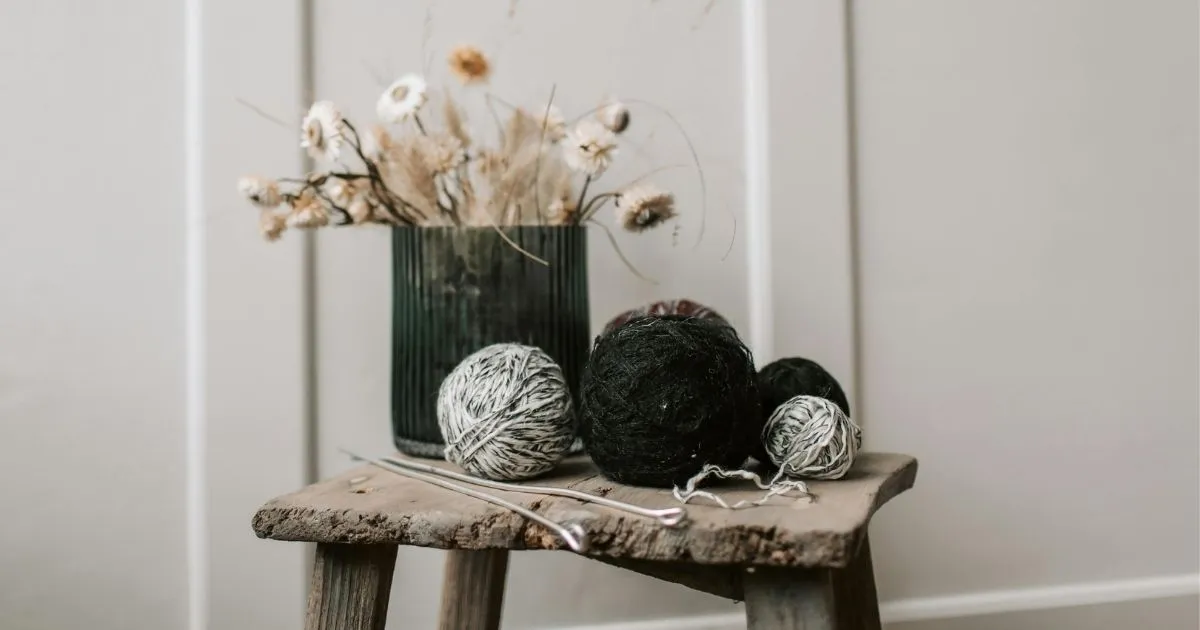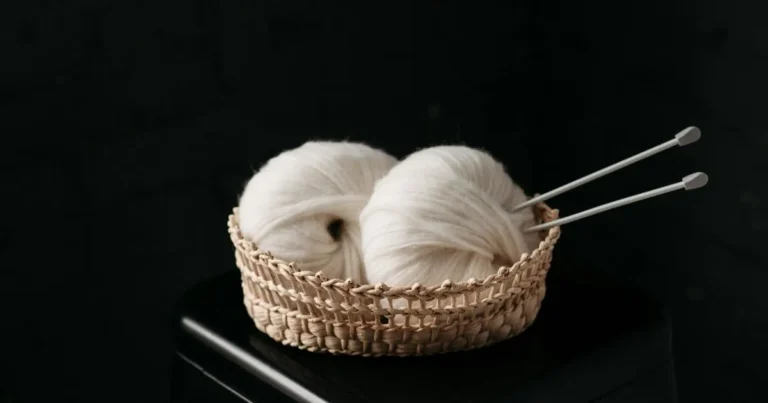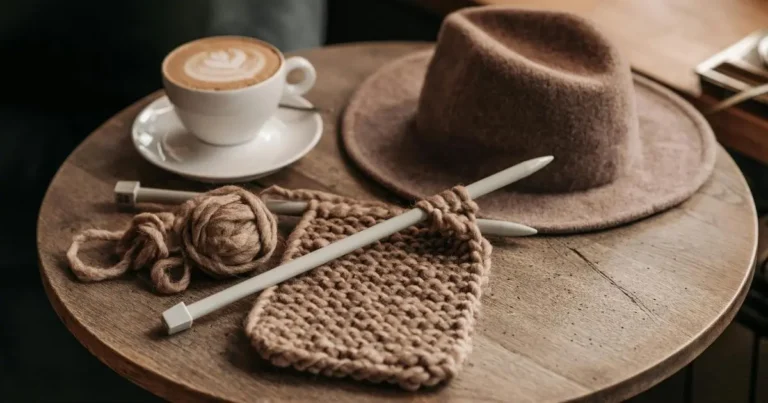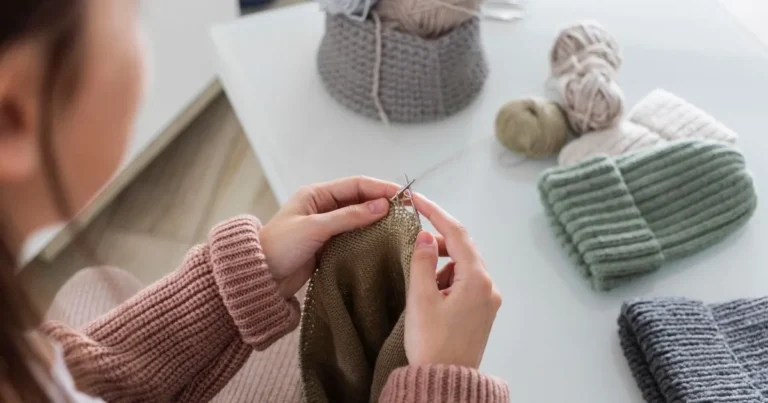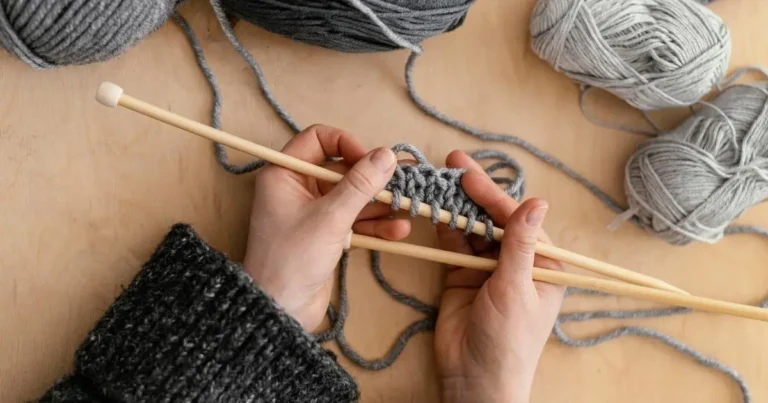Knitting Hooks: Inspiring Tips to Help You Choose the Right Ones for Joyful Knitting
Welcome to our guide on picking the best knitting accessories for your projects. If you love crafting, you’re probably excited to dive into the world of knitting. You want to make something beautiful.

Choosing the right tools can feel overwhelming with so many options. In this article, we’ll show you the different tools you need. We’ll explain their uses and how to pick the perfect one for you.
Whether you’re new to crafting or have lots of experience, this guide is for you. It’s here to help you make smart choices and improve your crafting journey.
Key Takeaways
- Understand the different types of knitting accessories available.
- Learn how to choose the right tools for your projects.
- Discover the benefits of using the right knitting accessories.
- Get tips on how to care for your knitting tools.
- Explore the various materials used to make knitting accessories.
What Are Knitting Hooks and Why They Matter
Knitting hooks are key tools in needlework, different from knitting needles. Many crafters mix them up, but knowing the difference is key. It helps you pick the right tool for your project.
Clarifying Terminology: Knitting Needles vs. Crochet Hooks
The main difference between knitting needles and crochet hooks is their use. Knitting needles make rows of connected loops. On the other hand, crochet hooks create single loops in yarn. This difference changes the projects you can do and the techniques you use.
Here are key differences:
- Knitting needles are used in pairs, while crochet hooks are used alone.
- The fabric made by knitting needles is more flexible and drapes well. Crochet hooks make stiffer fabric.
The Impact of Choosing the Right Tools
Choosing the right knitting hooks can greatly affect your project. The right hook ensures the right tension, texture, and look. For example, a too-small hook can make stitches tight, while a too-large one can make them loose and sloppy.
Understanding knitting hooks and their differences from needles helps you make better choices. This ensures your projects look as you imagined.
Types of Knitting Hooks for Different Projects
Knitting hooks come in many types for various projects and techniques. Knowing these differences is key to getting the best results in your knitting.

Standard Straight Hooks and Their Uses
Standard straight hooks are the most common. They are ideal for beginners and work for most crochet projects. These hooks are easy to use and come in materials like aluminum, wood, and plastic.
- Perfect for flat projects like scarves and blankets
- Available in a range of materials and sizes
- Easy to maneuver for those new to knitting
Circular Hooks for Larger Projects
Circular hooks are for bigger, more complex projects like sweaters and large blankets. They hold a lot of stitches comfortably, making them indispensable for intricate patterns.
- Ideal for projects that require a large number of stitches
- Help distribute the weight of the project more evenly
- Can be used for both knitting and crochet
Double-Pointed Hooks for Specialized Work
Double-pointed hooks are for special work, like knitting socks, gloves, and small items. They offer greater control and precision, loved by experienced crafters.
- Used for projects that require working in the round
- Enable the creation of complex, small items
- Available in sets to accommodate different project sizes
Understanding the different types of knitting hooks and their uses helps you pick the right tool for your next project. This ensures it turns out as you imagined.
Finding Your Perfect Knitting Hooks Size
The size of your knitting hook greatly affects your project’s look and feel. Picking the right size is key for the look you want, whether it’s a fancy lace shawl or a cozy blanket.

Understanding Size Measurements and Notation
Knitting hook sizes are measured in different ways around the world. In the US, they’re often labeled with letters or numbers. But internationally, sizes are in millimeters. Knowing these measurements helps you choose the right hook for your project.
Matching Hook Size to Yarn Weight
The yarn’s weight is very important when picking a knitting hook size. Thicker yarns need bigger hooks, and finer yarns need smaller ones. Most yarn labels suggest the right hook size, making it easier to start.
US vs. International Size Conversion Guide
If you work with patterns from different places, knowing the size conversion is crucial. A guide helps you match US and international sizes, ensuring you use the right hook for your project.
Learning about knitting hook sizes and matching them with yarn weight is key. It helps you make beautiful, professional-looking projects. Whether you’re new or experienced, the right tools and knowledge are vital for your crafting journey.
Getting a set of knitting accessories, including various hooks, can improve your knitting. It lets you try different projects and yarns, growing your skills and creativity.
Materials That Make a Difference
The material of your knitting hook can greatly affect your crafting experience. Different materials offer unique benefits, from durability and smoothness to warmth and grip. Understanding these differences can help you choose the right tool for your next project.
Aluminum and Metal: Durability and Smoothness
Aluminum and metal knitting hooks are known for their durability and smooth surface. They are ideal for intricate patterns and complex stitches. Metal hooks are particularly good for projects that require precision, as they provide a smooth, slick surface that allows yarn to glide effortlessly.
Wooden and Bamboo: Warmth and Grip
Wooden and bamboo knitting hooks offer a warm, natural feel that many crafters prefer. These materials provide a good grip, reducing the likelihood of hooks slipping from your hands. Bamboo hooks, in particular, are lightweight and have a smooth surface, making them suitable for a variety of yarn types.
Plastic and Acrylic: Lightweight and Affordable
Plastic and acrylic knitting hooks are lightweight and affordable, making them a great choice for beginners or for projects where you don’t want to invest in expensive tools. They come in a variety of colors and are generally easy to handle.
Specialty Materials for Unique Needs
Some knitting hooks are made from specialty materials designed for specific needs, such as ergonomic handles for comfort or specialized tips for particular techniques. These hooks cater to crafters with specific preferences or requirements, enhancing their overall crafting experience.
| Material | Characteristics | Best For |
|---|---|---|
| Aluminum/Metal | Durable, Smooth | Intricate patterns, complex stitches |
| Wood/Bamboo | Warm, Natural, Good grip | Projects requiring control, natural feel |
| Plastic/Acrylic | Lightweight, Affordable | Beginners, casual projects |
| Specialty | Ergonomic, Specialized tips | Crafters with specific needs or preferences |
By considering the material of your knitting hook, you can enhance your crafting experience and achieve better results. Whether you prioritize durability, comfort, or affordability, there’s a knitting hook material that’s right for you.
Ergonomic Knitting Hooks for Comfortable Crafting
Ergonomic knitting hooks are changing how we craft. They make sure you’re comfortable while knitting for a long time. These hooks are made to lessen hand pain, so you can keep crafting without stopping.
How Ergonomic Designs Prevent Hand Strain
Ergonomic hooks are made for your comfort. They have contoured handles that fit your hand well. This design cuts down on finger and wrist pressure.
It also lowers the chance of getting repetitive strain injuries. So, you can knit for hours without getting tired.
Top Ergonomic Brands Worth Investing In
Some brands stand out in the ergonomic hook market. Boyds and Clover are known for their quality and comfort. Getting hooks from these brands can really improve your knitting.
Features to Look for in Comfort-Focused Tools
When picking ergonomic hooks, look for certain features. Soft grip materials add extra comfort. And adjustable handles fit different hand sizes.
Also, think about the weight and balance of the hook. These things can affect how comfortable you are while using it.
Choosing ergonomic hooks means a more comfy crafting time and less injury risk. Whether you’re experienced or new, the right tools make a big difference.
Caring for Your Knitting Hooks Collection
Caring for your knitting hooks is key to keeping your crafting fun. It’s about more than just quality; it’s about enjoying every stitch. Learning how to care for your hooks is crucial as you grow your collection.
Proper Storage Solutions
Storing your hooks right keeps them safe and organized. Invest in a case or pouch made for knitting tools. This keeps them in one spot and makes them easy to find. You can also sort them by size or type in small containers or bags.
Cleaning and Maintenance Tips
Knitting hooks can get dirty and oily from your hands. Cleaning them with a soft cloth regularly helps. For deeper cleaning, a mild soap solution works, but dry them well to avoid rust.
Extending the Life of Your Crafting Tools
Keep your hooks away from extreme temperatures and harsh conditions. Handle them with care to avoid damage. Simple care tips can make your hooks last longer, enriching your crafting journey.
Experts say, “Proper care for your knitting tools boosts your crafting joy.” By following these tips, you protect your tools and make crafting smoother and more enjoyable.
Conclusion: Selecting the Right Knitting Hooks for Your Journey
Choosing the right knitting hooks is key to your crafting journey. Knowing about different types, materials, and sizes helps you make better choices. This can improve your knitting experience greatly.
Whether you’re new or experienced, the right tools can boost your creativity and speed. Think about your favorite projects and pick hooks that fit those needs. This guide has prepared you to pick the best hooks for your next project.
Remember, good tools make your work better. Look for brands known for quality and comfort. Try out different materials and sizes to find your perfect match.
FAQ
What is the difference between knitting needles and crochet hooks?
Knitting needles help create rows of loops. Crochet hooks, or knitting hooks, make loops in yarn. Knowing the difference helps pick the right tool for your project.
How do I choose the right knitting hook size for my project?
Pick the right hook size based on yarn weight and project texture. Use a size chart and check the yarn label for guidance.
What are the benefits of using ergonomic knitting hooks?
Ergonomic hooks reduce hand strain, making long crafting sessions easier. They’re great for those who experience hand pain while knitting or crocheting.
How do I care for my knitting hooks collection?
Store hooks in a dry, cool place. Clean them with a soft cloth and avoid extreme temperatures. This care extends their life.
What are the different materials used to make knitting hooks?
Hooks are made from materials like aluminum, metal, wood, bamboo, plastic, and acrylic. Each offers benefits like durability and warmth, so choose what fits your needs.
Can I use knitting hooks for knitting or are they only for crochet?
Hooks are mainly for crochet, but some knitting, like Tunisian crochet, use them. Traditional knitting usually needs needles.
What is the advantage of using circular knitting hooks?
Circular hooks are perfect for big projects like blankets and sweaters. They let you work on many stitches without turning your work.
Are there specialized knitting hooks for specific techniques or projects?
Yes, there are hooks like double-pointed ones for projects like socks and gloves. They help with complex tasks.

